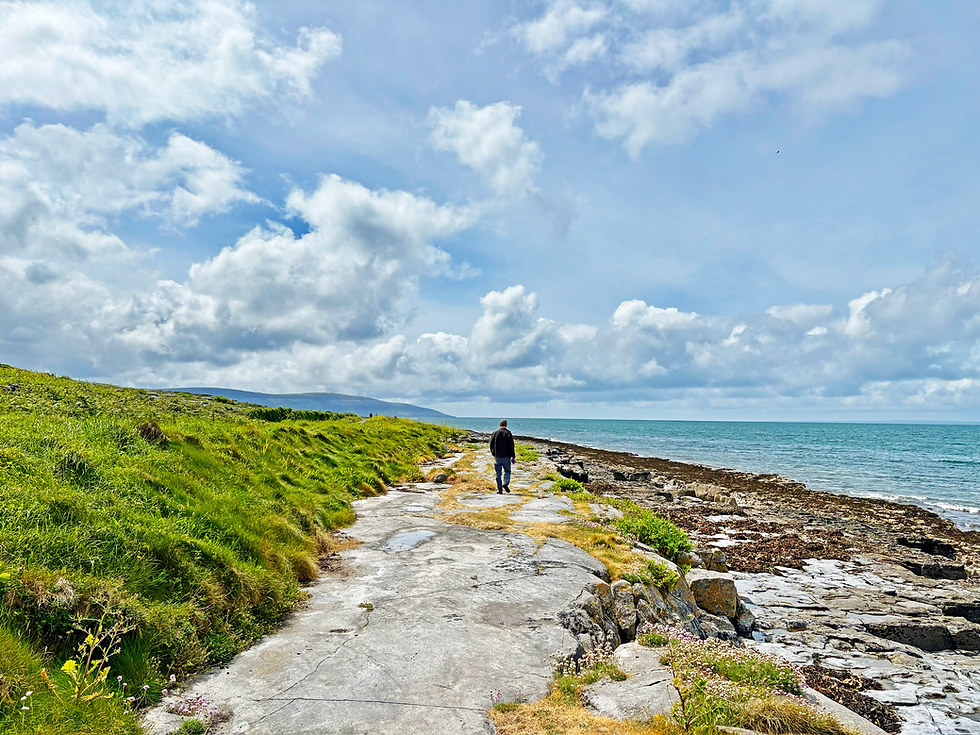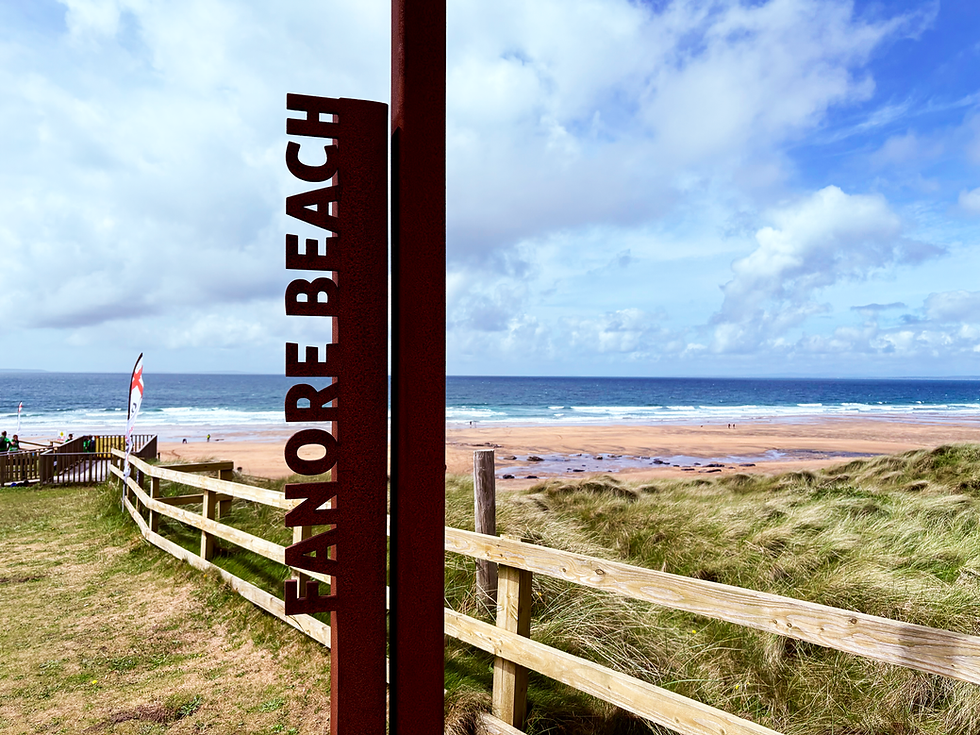The foamy seas and fossils of the Flaggy Shore
- Warren Berger

- Jun 23
- 3 min read
Updated: Aug 20

The Flaggy Shore has quite a literary history. Most famously, Seamus Heaney wrote a 1961 poem about it, called “Postscript,” wherein Heaney declared that this spot at the northern edge of the Burren—where “the wind and the light are working off each other,” and where the ocean is “wild with foam and glitter”—could “catch the heart off guard and blow it open.”
But it wasn’t just Heaney. Way back in the 1200s, the Irish bard O’Dalaigh wrote his passionate poems here. Fast forward to the early 20th century, and this was where W. B. Yeats, George Bernard Shaw, and J. M. Synge strolled in the summer breeze—coming to the Flaggy Shore as guests of the patron-of-the-arts and writer Lady Augusta Gregory, who owned a seaside summer home (and writer’s salon) called Mount Vernon.
The Flaggy Shore name derives from the squared-off, dark slabs of limestone seen at the water’s edge; they look as if they were carefully placed there (and they were, by glaciers). As you move away from the shoreline, the stones gradually become brighter as the color shifts from dark brown to tan to light gray. The rocks you see are sculpted in varying shapes with intricate designs on them. When you step onto them (carefully!) for a closer look, you’ll see ancient fossils embedded in the stone. Some of the oldest, and most beautiful, limestone in the Burren can be found here.
You needn’t navigate those tricky stones underfoot for long—the Flaggy Shore features a smooth, paved walkway enabling you to stroll miles of coast easily, so that you can focus less on your footing and more on the surroundings. The panoramic view is spectacular: the sculpted and multi-hued rock shore disappearing into Galway Bay on one side, and as you turn toward land, the Burren hills and mountains surrounding you on the eastern horizon.

A prime spot for creative thinking
Knowing that this place had inspired so many writers in the past, I came here on a warm May afternoon looking for a touch of that inspiration myself. I also sought to analyze the characteristics and special qualities of the Flaggy Shore that might make it a prime candidate for creative thinking.
Let me start with the simplest explanation for the Flaggy Shore’s inspirational effect: It is a coast that’s easy to walk. Thanks to the walkway, there’s no slipping in sand or on wet stones.
But of course, there are other beaches that have various types of walkways (such as boardwalks), so what makes this one special? Well, there’s the combination of taking in the sea on one side, and the mountains on the other—two very different, but equally powerful, types of inspirational landscapes. Then there’s the plant life: The Flaggy Shore has lush greenery along one side of the walkway, while on the other side—among the rocks leading to the water—brilliantly-colored flowers sprout around and between the stones.
The shore also has a powerful sense of history, owing to those ancient rocks and fossils. And, too, there is artistic tradition: If you know that artists have come here and been inspired, that, in itself, can be inspiring. At one point, I perched on a bench near Lady Gregory’s former Mount Vernon salon and looked out at the sea, thinking, Did Heaney sit here at some point, or perhaps Yeats? Maybe a great line of poetry was conceived while sitting here.

Lastly, the Flaggy Shore offers just enough variety to keep the walk interesting for two to three hours. The landscape changes as different mountains come into view; the swathes of flowers vary, with a long stretch of yellows giving way to reds; the shoreline rocks look completely different at various stages of the walk; and at one point, a small blue lake with white swans suddenly comes into view. If you take the loop (instead of backtracking the way you came on the path), your walk veers away from the coast and turns inland, and now you’re walking back on a quiet country road surrounded by classic Irish open fields.
So, with the Flaggy Shore, you get 1) Ease of walking (allowing you the luxury to daydream); 2) the restorative effects of the sea, combined with 3) expansive views of mountains; 4) lush greenery and vibrant flowers; 5) a powerful sense of history; 6) artistic tradition; and 7) a varied and ever-changing experience.
Put it all together and you get at least seven reasons why this special place can “blow your heart open” and fill your mind with creative ideas.

















Comments